ภาพรวม
- สเตนเลส ไม่ได้หมายความว่า "ไม่เป็นสนิม" แต่หมายถึง "ทนต่อการเกิดสนิมมากกว่า" การเลือกเกรดของสเตนเลสควรตรงกับความต้องการใช้งาน ไม่ใช่แค่เลือกเกรดที่สูงกว่าเสมอไป
- เหล็กสามารถแบ่งได้เป็นสองประเภทหลัก ได้แก่ เหล็กกล้าคาร์บอน (Carbon Steel) และ เหล็กกล้าไร้สนิมและเหล็กอัลลอย (Stainless Steel & Alloy Steel) ซึ่งเหล็กเป็นโลหะผสมที่มีจุดเด่นในด้าน ความแข็งแรง ทนต่อการกัดกร่อน และความยืดหยุ่นในการขึ้นรูป
- ห่วงโซ่อุปทานในอุตสาหกรรมเหล็กแบ่งออกเป็น ต้นน้ำ กลางน้ำ และปลายน้ำ โดย เหล็กกล้าคาร์บอน นิยมใช้ใน การก่อสร้าง การผลิตเครื่องจักร และการขนส่ง ส่วน เหล็กกล้าไร้สนิม มักถูกใช้ใน อุตสาหกรรมแปรรูปอาหาร เครื่องใช้ในบ้าน และวิศวกรรมทางทะเล
สเตนเลสกันสนิมได้จริงหรือ? สเตนเลสคืออะไร?
สเตนเลส (Stainless Steel) ซึ่งนิยมใช้ในอุตสาหกรรม เซมิคอนดักเตอร์ จอ LCD และ อิเล็กทรอนิกส์ความแม่นยำสูง ไม่ได้กันสนิมได้ 100% แต่มี ความทนทานต่อการกัดกร่อนสูง
สเตนเลสมีต้นกำเนิดจากอุตสาหกรรมเหล็ก โดยผลิตจาก เหล็ก (Iron) ที่ได้จากแร่เหล็ก (Iron Ore) ผสมกับธาตุ โครเมียม (Cr) นิกเกิล (Ni) แมงกานีส (Mn) และ โมลิบดีนัม (Mo) ซึ่งธาตุเหล่านี้ช่วยเพิ่มคุณสมบัติ ต้านการเกิดสนิมและออกซิเดชัน (Oxidation Resistance) ทำให้สเตนเลสทนทานและทำความสะอาดง่าย ด้วยเหตุนี้จึงเป็นวัสดุยอดนิยมสำหรับ เครื่องครัวและอุปกรณ์ในห้องครัว
ในอุตสาหกรรมเซมิคอนดักเตอร์ มีความจำเป็นต้องใช้น้ำอัลตร้าพิวร์ (Ultrapure Water) ซึ่ง สะอาดกว่าน้ำประปาถึง 1,000 เท่า สำหรับกระบวนการที่ละเอียดอ่อน เช่น การล้างโฟโตมาสก์ (Photomask Cleaning) การล้างเวเฟอร์ (Wafer Washing) การกัดกรด (Etching) และ การขัดพื้นผิวเชิงกล (Mechanical Polishing) การเตรียมน้ำบริสุทธิ์เหล่านี้ใช้เทคนิคหลากหลาย เช่น การกลั่น การแลกเปลี่ยนไอออน รีเวิร์สออสโมซิส (RO) อิเล็กโทรไดอะลิซิส และการกรอง เพื่อให้ได้มาตรฐานความบริสุทธิ์สูงสุด
แนวโน้มตลาดสเตนเลสในปัจจุบัน
ตลาดสเตนเลสกำลังเติบโตอย่างต่อเนื่อง โดยเฉพาะในภูมิภาค เอเชียแปซิฟิก เช่น ประเทศจีน เนื่องจากการพัฒนาโครงสร้างพื้นฐานและความก้าวหน้าทางเทคโนโลยีในอุตสาหกรรมเหล็ก
ด้วยคุณสมบัติ ทนต่อการกัดกร่อนและแข็งแรง สเตนเลสจึงเหมาะสำหรับการใช้งานใน อุตสาหกรรมก่อสร้าง ระบบท่อไอเสียรถยนต์ และ เครื่องจักรอิเล็กทรอนิกส์สมัยใหม่
[1]
AISI 303 และ 316 สเตนเลสคืออะไร?
เรามักเห็นฉลากสินค้าที่ระบุว่า “สเตนเลสเกรดอาหาร 304” หรือ “สเตนเลสเกรดทางการแพทย์ 316” แล้วตัวเลขเหล่านี้หมายถึงอะไร?
ตัวเลขที่มาก่อนคำว่า สเตนเลส แสดงถึง องค์ประกอบของโลหะและสัดส่วนของโลหะผสม ที่แตกต่างกัน โดยใช้ระบบการตั้งชื่อที่พัฒนาโดย American Iron and Steel Institute (AISI) ซึ่งเป็นมาตรฐานที่นิยมใช้กันอย่างแพร่หลายทั่วโลก
Cr (โครเมียม)
โครเมียมช่วยสร้าง ชั้นฟิล์มป้องกันออกไซด์ของโครเมียม (Chromium Oxide Protective Layer) บนพื้นผิวโลหะ ซึ่งเป็นปัจจัยสำคัญที่ทำให้ สเตนเลสมีความทนทานต่อการกัดกร่อน โดยชั้นฟิล์มนี้สามารถซ่อมแซมตัวเองได้หากเกิดรอยขีดข่วนหรือความเสียหายเล็กน้อย ช่วยยืดอายุการใช้งานของสเตนเลสในสภาพแวดล้อมที่เสี่ยงต่อการเกิดสนิม
Ni (นิกเกิล)
นิกเกิล ช่วยเพิ่ม ความแข็งแรงและความยืดหยุ่น (Ductility) ของสเตนเลส ทำให้สามารถขึ้นรูปได้ง่ายและทนต่อแรงดึงสูง นอกจากนี้ นิกเกิลยังช่วยเพิ่ม ความทนทานต่อการกัดกร่อน โดยเฉพาะในสภาพแวดล้อมที่มี ความเข้มข้นของไอออนไฮโดรเจนสูง (High Hydrogen Ion Concentration) เช่น กรดหรือสารเคมีเข้มข้น ทำให้สเตนเลสสามารถใช้งานในอุตสาหกรรมเคมีและงานทางทะเลได้อย่างมีประสิทธิภาพ
Mn (แมงกานีส)
แมงกานีสช่วยเพิ่ม ความแข็ง (Hardness) และ ความแข็งแรง (Strength) ของเหล็ก อีกทั้งยังช่วยปรับปรุง กระบวนการขึ้นรูป (Processability) และ ความทนทานต่อการกัดกร่อน (Corrosion Resistance) ทำให้เหล็กสามารถทนต่อสภาวะแวดล้อมที่รุนแรงและง่ายต่อการผลิตในกระบวนการทางอุตสาหกรรม
Mo (โมลิบดีนัม)
โมลิบดีนัม ช่วยเพิ่ม ความทนทานต่อการกัดกร่อน (Corrosion Resistance) ของสเตนเลส โดยเฉพาะใน สภาพแวดล้อมที่รุนแรง เช่น น้ำทะเลที่มีไอออนคลอไรด์ (Chloride Ions) ซึ่งเป็นสาเหตุหลักของการเกิดสนิมรูพรุน (Pitting Corrosion) ทำให้สเตนเลสที่มีโมลิบดีนัมเหมาะสำหรับการใช้งานในอุตสาหกรรมทางทะเลและเคมี
ระบบการกำหนดเลขเกรดสเตนเลสขึ้นอยู่กับสัดส่วนของธาตุโลหะผสม
ตัวเลขในเกรดของสเตนเลสบ่งบอกถึง สัดส่วนของธาตุโลหะผสม ซึ่งมีผลต่อคุณสมบัติของสเตนเลสในด้านต่าง ๆ เช่น ความทนทานต่อการกัดกร่อน และ ความแข็งแรง
AISI 304 มีส่วนผสมของ โครเมียม 18% และ นิกเกิล 8% (เรียกว่า 18-8) มีความ ทนต่อการกัดกร่อนและให้ผิวมันเงาสวยงาม นิยมใช้ใน เครื่องครัวและการผลิตเฟอร์นิเจอร์
AISI 316 มีส่วนผสมของ โครเมียมประมาณ 16% นิกเกิล 10% (18-10) และ โมลิบดีนัม 2% ซึ่งให้ความทนทานต่อการกัดกร่อนสูงกว่า เกรด 304 โดยเฉพาะใน สภาพแวดล้อมที่มีไอออนคลอไรด์ เช่น น้ำทะเล แม้ว่าจะมีราคาสูงกว่า แต่จึงเหมาะสำหรับ โครงสร้างทางทะเลและชิ้นส่วนเรือ
AISI 440 มี ความแข็งสูงที่สุด ในกลุ่มสเตนเลส แต่ ทนต่อการกัดกร่อนน้อยกว่า เหมาะสำหรับการผลิต มีดคุณภาพสูง และ เครื่องมือศัลยกรรม
ดังนั้น การเลือกเกรดของสเตนเลสควรพิจารณาจาก ความต้องการเฉพาะด้าน เช่น ความทนทานต่อการกัดกร่อนหรือความแข็งแรงของวัสดุ แทนที่จะยึดตาม ตัวเลขเกรดที่สูงกว่า หรือ การแบ่งประเภทเกรดอาหาร/การแพทย์ เพียงอย่างเดียว
อุตสาหกรรมเหล็ก
สเตนเลสผลิตขึ้นอย่างไร? สเตนเลสมีต้นกำเนิดจาก อุตสาหกรรมเหล็ก ซึ่งเป็น พื้นฐานสำคัญของหลายภาคส่วน เช่น โครงสร้างพื้นฐาน การขนส่ง และการผลิต อีกทั้งยังเป็น ตัวชี้วัดเศรษฐกิจที่สำคัญ โดยอุตสาหกรรมเหล็กครอบคลุมหลายกระบวนการ เช่น การหลอม (Smelting) การหล่อ (Casting) การตีขึ้นรูป (Forging) และ การรีดเหล็ก (Rolling)
เหล็ก เป็นโลหะผสมที่มีส่วนประกอบหลักคือ เหล็ก (Iron) และ คาร์บอน (Carbon) รวมถึง แมงกานีส (Mn) และ ซิลิกอน (Si) ซึ่งขึ้นชื่อในด้าน ความแข็งแรงสูง ทนต่อการกัดกร่อน และยืดหยุ่นในการขึ้นรูป
ประเภทของเหล็ก
เหล็กสามารถแบ่งออกเป็น 2 ประเภทหลัก:
1.เหล็กกล้าคาร์บอน (Carbon Steel)
2.เหล็กกล้าไร้สนิมและเหล็กอัลลอย (Stainless Steel & Alloy Steel)
ไต้หวัน ผลิตเหล็กประมาณ 20 ล้านตันต่อปี ซึ่งอยู่ใน อันดับที่ 12 ของโลก ตามรายงานของ World Steel Association ในปี 2022
ปัจจุบันอุตสาหกรรมเหล็กมีแนวโน้มไปสู่ โครงสร้างขนาดเล็กถึงขนาดกลาง ใช้ทุนสูง และมี บุคลากรด้านเทคนิคในสัดส่วนที่มาก ทำให้เป็น อุตสาหกรรมที่เน้นเทคโนโลยีสูง
ห่วงโซ่อุปทานของอุตสาหกรรมเหล็ก (Steel Industry Supply Chain)
ในอุตสาหกรรมเหล็ก เหล็กถูกแบ่งออกเป็นสองประเภทหลักตามวัสดุของผลิตภัณฑ์สำเร็จรูป ได้แก่ "เหล็กกล้าคาร์บอน (Carbon Steel)" และ "เหล็กกล้าไร้สนิมและเหล็กอัลลอย (Stainless Steel & Alloy Steel)" ซึ่งแต่ละประเภทสามารถแบ่งออกเป็นส่วนต้นน้ำ กลางน้ำ และปลายน้ำตามบทบาทในตลาด
เหล็กกล้าคาร์บอน (Carbon Steel)
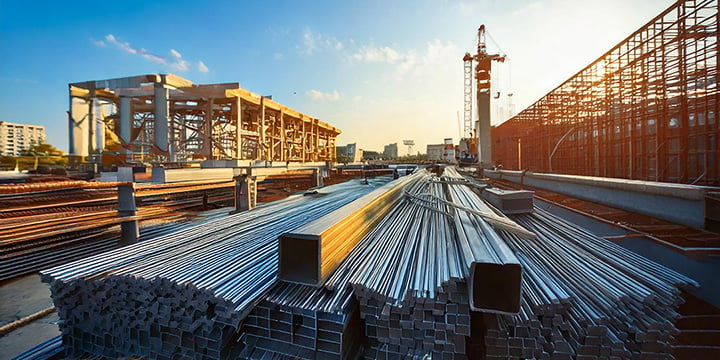
ต้นน้ำ: วัตถุดิบสำหรับเหล็กกล้าคาร์บอนประกอบด้วยถ่านหิน เหล็กแร่ ทรายแร่ และเหล็กรีไซเคิล กระบวนการหลักรวมถึงการหลอมเหล็กในเตาไฟฟ้าแบบบลาสต์ (การให้ความร้อนเหล็กแร่และการลดกระบวนการเพื่อผลิตเหล็กดิบ) หรือการกลั่นด้วยเตาอาร์คไฟฟ้า (EAF) โดยทั้งสองกระบวนการมุ่งเน้นการเพิ่มความแข็งแรงและความแข็งของเหล็ก ผลิตภัณฑ์ได้แก่ บิลเล็ตส์ บลูมส์ และสแลบบ์ ปริมาณคาร์บอนเป็นตัวแยกความแตกต่างของเหล็กกล้าคาร์บอนจากเหล็กกล้าไร้สนิม โดยไม่มีการเติมส่วนผสมที่ทนทานต่อการกัดกร่อนเช่น โครเมียม
กลางน้ำ: กระบวนการที่รวมถึงการรีดร้อน/เย็นสำหรับแผ่นเหล็ก เหล็กเส้น คอยล์ ลวดและอื่นๆ นอกจากนี้ยังครอบคลุมประเภทเหล็กต่างๆ และเหล็กฉากที่ผลิตผ่านการรีด การตัด การทำขอบ และการประมวลผลอื่นๆ
ปลายน้ำ:
1. อุตสาหกรรมก่อสร้าง: แผ่นเหล็กรีดร้อนและเย็นและเหล็กเส้นถูกใช้ในการก่อสร้างอาคาร สะพาน ถนน และโครงสร้างอื่นๆ
2. การผลิตเครื่องจักร: คอยล์เหล็กและคอยล์ลวดถูกใช้อย่างแพร่หลายในการผลิตอุปกรณ์เครื่องจักร ส่วนประกอบของยานยนต์ และเครื่องจักรอุตสาหกรรมต่างๆ
3. การแปรรูปและการผลิต: เหล็กที่ผ่านการแปรรูปและตัดจะถูกทำเป็นเหล็กและเหล็กฉากประเภทต่างๆ ซึ่งใช้ในการผลิตส่วนประกอบ ชิ้นส่วนประกอบ งานฝีมือ และอื่นๆ
4. พลังงานและการขนส่ง: วัสดุเหล็กมีการใช้งานอย่างกว้างขวางในภาคพลังงานและการขนส่ง รวมถึงเหล็กแท่ง ท่อเหล็ก และอื่นๆ
เหล็กกล้าไร้สนิมและเหล็กอัลลอย (Stainless Steel & Alloy Steel)
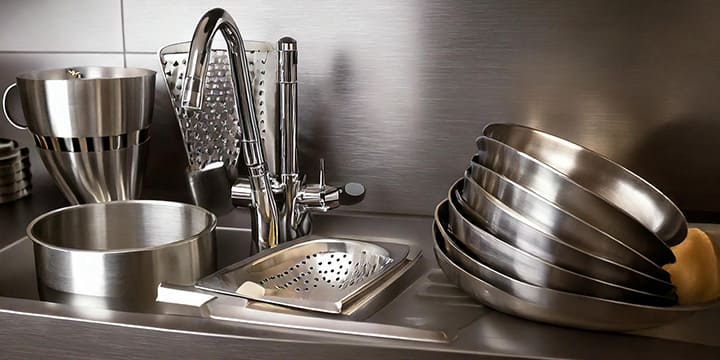
ต้นน้ำ: วัตถุดิบสำหรับสแตนเลสประกอบด้วยแร่เหล็ก โครเมียม นิเกิล โคบอลต์ และอื่นๆ แร่เหล็กเป็นแร่ธรรมชาติที่ประกอบด้วยออกไซด์ของเหล็ก คาร์บอเนต และซัลเฟต ในกระบวนการผลิตสแตนเลส เหล็กจะถูกสกัดจากแร่เหล็กโดยใช้กระบวนการเตาหลอมไฟฟ้า นิเกิล โมลิบดีนัม ทองแดง ไททาเนียม ไนโอเบียม และธาตุผสมอื่นๆ ถูกเติมเข้าไปในกระบวนการเพื่อผลิตสแตนเลส ซึ่งให้คุณสมบัติต้านทานการกัดกร่อนและการออกซิเดชั่น
กลางน้ำ: เนื่องจากความต้องการเฉพาะ (การต้านการกัดกร่อน การใช้งานเกรดอาหาร ฯลฯ) ภาคนี้อาจรวมถึงกระบวนการเพิ่มเติม เช่น การตัด การผลิตท่อ (การอัดขึ้นรูป การยืด การดัด ฯลฯ) การบำบัดผิว (การขัด การดอง การชุบโครเมียม ฯลฯ) การเชื่อม และการเชื่อมต่อ (การเชื่อม TIG การเชื่อมด้วยเลเซอร์ ฯลฯ)
ปลายน้ำ:
1. การแปรรูปอาหารและการจัดเลี้ยง: เครื่องใช้สแตนเลสที่มีความต้านทานการกัดกร่อนสูงถูกใช้ในอุตสาหกรรมการผลิตอาหารและการจัดเลี้ยงอย่างแพร่หลาย รวมถึงถาดสแตนเลส ชาม และเครื่องใช้สำหรับทานอาหาร
2. เครื่องมือทางการแพทย์: ความต้านทานการกัดกร่อนและความสามารถในการเป็นมิตรกับร่างกายทำให้สแตนเลสเป็นวัสดุที่ชื่นชอบในการผลิตเครื่องมือผ่าตัดและอุปกรณ์การแพทย์
3. วิศวกรรมเคมีและการเดินเรือ: ท่อและภาชนะสแตนเลสเป็นสิ่งที่ใช้บ่อยในอุตสาหกรรมเคมีและวิศวกรรมทางทะเลเนื่องจากความต้านทานการกัดกร่อนในสภาพแวดล้อมที่รุนแรง
4. บ้านและการตกแต่ง: ความทนทานต่ออุณหภูมิสูง ความสะดวกในการทำความสะอาด ความทนทาน และความเป็นมิตรกับสิ่งแวดล้อมทำให้สแตนเลสเป็นที่นิยมในการผลิตเฟอร์นิเจอร์ เช่น โคมไฟและเครื่องครัว
[2]
อุปกรณ์สำคัญในกระบวนการผลิตเหล็ก — หัวฉีดและเครื่องวัดการไหล
การใช้งานที่ 1: การใช้หัวฉีดในอุตสาหกรรมเหล็ก
หัวฉีด (Nozzles) เป็นเครื่องมือสำคัญในอุตสาหกรรมเหล็ก ไม่เพียงแค่ช่วย ระบายความร้อนของเหล็กแท่ง (Steel Billets) แต่ยังช่วย ควบคุมปริมาณของสารหล่อเย็น ในระหว่างกระบวนการผลิตเหล็กเพื่อให้มีการกระจายธาตุโลหะผสมได้อย่างสม่ำเสมอ
ใน กระบวนการเตาหลอมระเบิด (Blast Furnace) หัวฉีดช่วยใช้ พลังงานความร้อนอย่างมีประสิทธิภาพ เพื่อเพิ่มประสิทธิภาพการผลิต นอกจากนี้ หัวฉีดยังถูกใช้ใน กระบวนการเคลือบผิวเหล็ก (Surface Treatments) เช่น การล้างแผ่นเหล็ก การเคลือบ และการป้องกันการกัดกร่อน เพื่อให้ได้คุณภาพของผลิตภัณฑ์และความสมบูรณ์ของพื้นผิวที่ยอดเยี่ยม
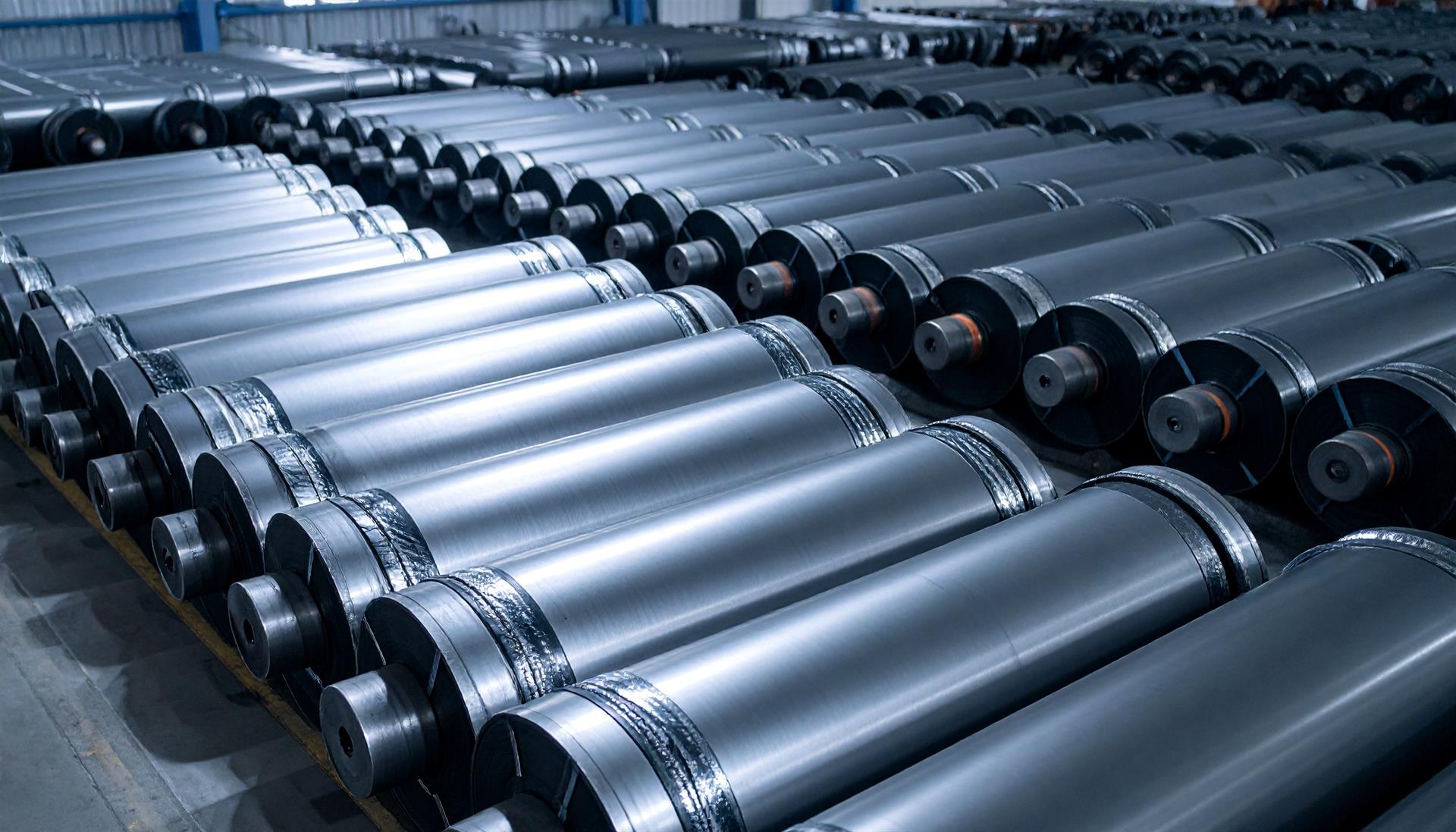
กรณีศึกษา: ผู้ผลิตเหล็กเส้นในไต้หวัน ผลิตได้ 600,000 ตันต่อปี
สถานการณ์:
บริษัทใช้ เทคโนโลยีเตาอาร์กไฟฟ้า (Electric Arc Furnace) ในกระบวนการผลิตเหล็กเส้น (Rebar) โดยใช้ แท่งอิเล็กโทรดกราไฟต์ (Graphite Electrode Rods) เป็นตัวนำไฟฟ้าเพื่อสร้าง เตาหลอมที่มีอุณหภูมิสูง สำหรับการหลอมเหล็ก
หลังจากใช้งานแท่งอิเล็กโทรดแล้ว บริษัทจะ พ่นน้ำหล่อเย็นผ่านหัวฉีด (Nozzles) เพื่อลดอุณหภูมิของแท่งอิเล็กโทรด อย่างไรก็ตาม ในระยะแรกบริษัทเลือกใช้ หัวฉีดทองเหลือง (Brass Nozzles) สำหรับการหล่อเย็น ซึ่งพบปัญหาว่า หัวฉีดทองเหลืองมีแนวโน้มเกิดการเสียรูปภายใต้สภาวะอุณหภูมิสูง ส่งผลให้ อายุการใช้งานสั้น และต้อง เปลี่ยนหัวฉีดบ่อยครั้ง ซึ่งทำให้ ต้นทุนการผลิตเพิ่มขึ้น
ทางออก: LORRIC - KG Solid Conical Nozzles for the Steel Industry
LORRIC แนะนำให้เปลี่ยนมาใช้หัวฉีดสแตนเลสเพื่อยืดอายุการใช้งาน ผลิตภัณฑ์หัวฉีดกรวยทึบชนิดพิเศษ KG ของ LORRIC สำหรับอุตสาหกรรมเหล็กมีการออกแบบแผ่นพลาสติกตะกอนแบบ X ซึ่งช่วยลดการปั่นป่วนของของไหลเพื่อให้ได้อนุภาคสเปรย์ที่สม่ำเสมอ ทำให้ประสิทธิภาพการระบายความร้อนดีขึ้น วัสดุสแตนเลสของหัวฉีด LORRIC ทำให้มีอายุการใช้งานยาวนานกว่าเปรียบเทียบกับหัวฉีดของผู้ผลิตทั่วไป บริษัทได้ทำการทดสอบการฉีดของหัวฉีดเราและยืนยันประสิทธิภาพ ทำให้พวกเขาตัดสินใจเลือกหัวฉีด KG เป็นหัวฉีดเฉพาะสำหรับระบบระบายความร้อนของขั้วไฟฟ้า
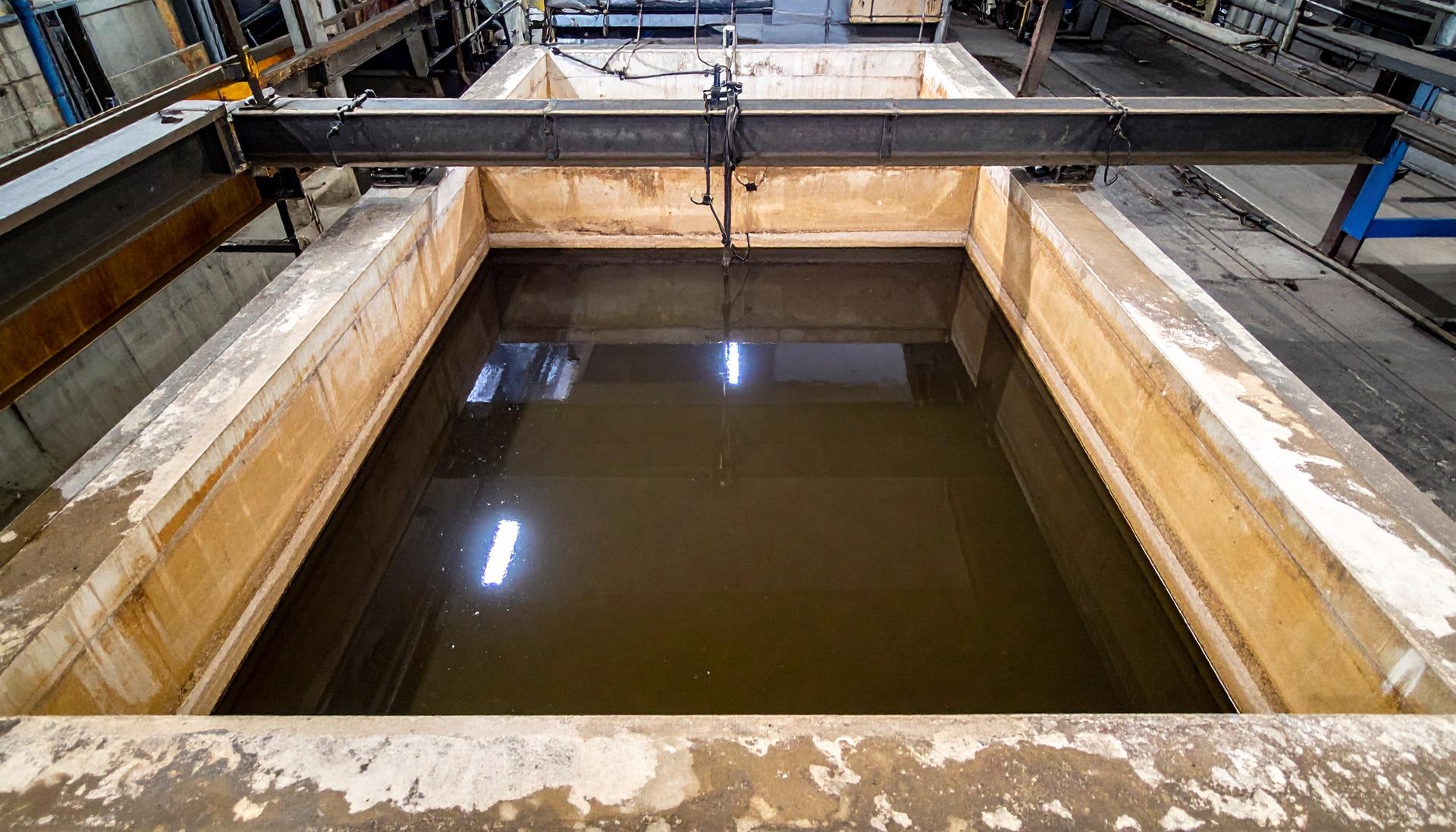
กรณีศึกษา: ผู้ผลิตชั้นนำในกลุ่มอุตสาหกรรมลวดและสายเคเบิล และเหล็กกล้าพิเศษในภูมิภาคจีน
สถานการณ์: บริษัทก่อตั้งขึ้นในไต้หวันในปี 1966 โดยเริ่มต้นจากการผลิตลวดและสายเคเบิล ปัจจุบันได้กลายเป็นผู้เล่นรายสำคัญในอุตสาหกรรมลวดและสายเคเบิลและเหล็กกล้าพิเศษในภูมิภาคจีน ในธุรกิจหลักของบริษัท ส่วนลวดและสายเคเบิลครอบคลุมวัสดุทองแดง สายไฟฟ้า และสายสื่อสาร ส่วนเหล็กกล้าไร้สนิมผลิตเหล็กแท่ง ขดลวดเหล็ก แท่งเหล็กขัดเงา และท่อไร้รอยต่อ ทำให้บริษัทเป็นผู้ผลิตผลิตภัณฑ์เหล็กกล้าไร้สนิมแบบยาวชั้นนำในเอเชีย บริษัทเผชิญกับปัญหาในกระบวนการล้างผิวด้วยสารกรด ซึ่งใช้หัวฉีดจากแบรนด์ยุโรปและอเมริกา สารละลายที่ใช้ในกระบวนการประกอบด้วยสารกัดกร่อนสูง เช่น กรดไนตริก (HNO3) และกรดไฮโดรฟลูออริก (HF) ซึ่งทำให้เกิดปัญหาการอุดตันของหัวฉีด ส่งผลให้ต้องหยุดเครื่องจักรทุกสองเดือนเพื่อบำรุงรักษาและเปลี่ยนหัวฉีด ค่าใช้จ่ายสูงของหัวฉีดจากแบรนด์ยุโรปและอเมริกาทำให้ต้นทุนการบำรุงรักษาเพิ่มขึ้น บริษัทจึงมองหาทางเลือกที่เหมาะสมกว่า
ทางออก: LORRIC - KAD Multi-piece Fan Nozzle
หลังจากทำความเข้าใจความต้องการของลูกค้าแล้ว เราแนะนำหัวฉีดพัดลม KAD แบบหลายชิ้น หัวฉีดพัดลม KAD มีการออกแบบสามชิ้น ทำให้การบำรุงรักษา ทำความสะอาด และการเปลี่ยนง่าย การออกแบบตำแหน่งที่เป็นเอกลักษณ์ระหว่างหัวฉีดและฐานช่วยให้การเปลี่ยนแต่ละครั้งยังคงรักษาตำแหน่งเดิม แม้จะมีการเปลี่ยนบ่อยครั้งก็ไม่ส่งผลกระทบต่อประสิทธิภาพโดยรวมของสายการผลิต
การใช้งานที่ 2: การประยุกต์ใช้เครื่องวัดการไหลในอุตสาหกรรมเหล็ก
เครื่องวัดการไหลเป็นเครื่องมือทางเทคนิคที่สำคัญในอุตสาหกรรมเหล็ก ในกระบวนการหลอมเหล็กด้วยเตาหลอมระเบิด เครื่องวัดการไหลถูกใช้กันอย่างแพร่หลายในการตรวจสอบการไหลของน้ำหล่อเย็น เชื้อเพลิง และสารหล่อเย็น เพื่อให้มั่นใจถึงความเสถียรของระบบและการใช้พลังงานและทรัพยากรอย่างมีประสิทธิภาพ นอกจากนี้ ในขั้นตอนต่างๆ เช่น การอบชุบด้วยความร้อน การหล่ออย่างต่อเนื่อง และการรีดเหล็ก เครื่องวัดการไหลยังช่วยในการควบคุมอัตราการระบายความร้อนและพารามิเตอร์ของกระบวนการได้อย่างแม่นยำ เพื่อให้ได้การควบคุมเหล็กที่แม่นยำยิ่งขึ้น ในด้านการบำบัดผิวเหล็ก การใช้เครื่องวัดการไหลช่วยให้มั่นใจถึงสัดส่วนของของเหลวในกระบวนการ เช่น การเคลือบ การป้องกันการกัดกร่อน และการทำความสะอาด ส่งผลให้สามารถรับประกันคุณภาพของผลิตภัณฑ์และประสิทธิภาพด้านต้นทุนได้
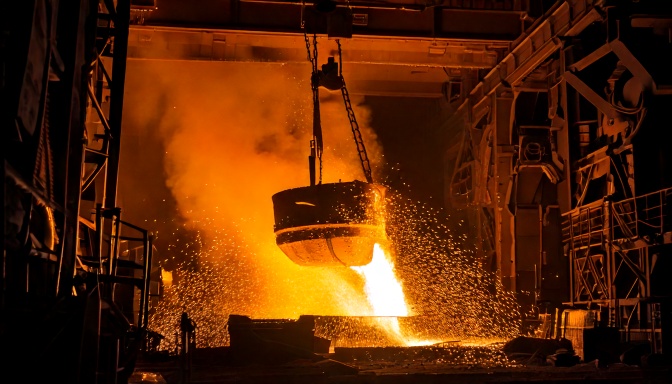
กรณีศึกษา: ผู้ผลิตเหล็กกล้าไร้สนิมชั้นนำในไต้หวัน
สถานการณ์: บริษัทแห่งนี้เป็น โรงงานผลิตเหล็กกล้าไร้สนิมแบบครบวงจรรายแรกในไต้หวัน ที่มี กระบวนการผลิตตั้งแต่การหลอม การรีดร้อน ไปจนถึงการรีดเย็น ผลิตภัณฑ์เหล็กกล้าไร้สนิมของบริษัทไม่เพียงตอบสนองความต้องการของตลาดภายในประเทศ แต่ยังส่งออกไปยังหลายประเทศใน เอเชีย แอฟริกา ยุโรป และอเมริกา
ผลิตภัณฑ์ที่ผ่านการแปรรูปถูกนำไปใช้ในหลากหลายอุตสาหกรรม เช่น อุตสาหกรรมยานยนต์ เครื่องใช้ในครัวเรือน การผลิตเครื่องจักร และการก่อสร้าง
บริษัทต้องการ ติดตั้งเครื่องวัดการไหลบนท่อสเตนเลสขนาด 1-½ นิ้ว เพื่อ ตรวจจับการอุดตันของท่อ โดยไม่ต้อง เสี่ยงต่อการรั่วไหลที่เกิดจากการตัดท่อ จึงได้ ขอคำแนะนำจากบริษัทของเราเพื่อหาทางแก้ไขที่เหมาะสม
ทางออก: LORRIC FU-TX310 Clamp-On Ultrasonic Flow Meter
โดยพิจารณาจากสภาพแวดล้อมการทำงานของลูกค้า LORRIC จึงแนะนำ FU-TX310 Clamp-On Ultrasonic Flow Meter หัววัดอัลตราโซนิก FU-TX310 ของ LORRIC มีการติดตั้งภายนอก ช่วยให้ลูกค้าสามารถติดตั้งและเริ่มการตรวจสอบการไหลโดยไม่ต้องหยุดการทำงานของอุปกรณ์ คุณสมบัติที่ไม่รุกรานและไม่ต้องตัดท่อทำให้สามารถติดตั้ง ถอดออก บำรุงรักษา หรือสอบเทียบได้ง่าย ช่วยลดค่าใช้จ่ายในการบำรุงรักษาอย่างมีนัยสำคัญ ในระหว่างการติดตั้งเครื่องวัดการไหลอัลตราโซนิก การวางตำแหน่งหัววัดที่ไม่ถูกต้องอาจส่งผลกระทบต่อความแม่นยำของข้อมูล เพื่อแก้ไขปัญหานี้ LORRIC จึงได้จดสิทธิบัตรข้อต่อโลหะสำหรับการวางตำแหน่งหัววัด ซึ่งช่วยให้ลูกค้าสามารถระบุตำแหน่งที่ถูกต้องได้ง่าย ทำให้กระบวนการติดตั้งสะดวกขึ้น หลังจากทดลองใช้งาน FU-TX310 Clamp-On Ultrasonic Flow Meter บริษัทมีความพึงพอใจสูงกับความแม่นยำ การออกแบบติดตั้งภายนอกช่วยขจัดความกังวลเกี่ยวกับความเสี่ยงในการรั่วไหลและการสูญเสียความดันที่เกิดจากการตัดท่อ ซึ่งตอบสนองความต้องการของพวกเขาได้อย่างสมบูรณ์แบบ